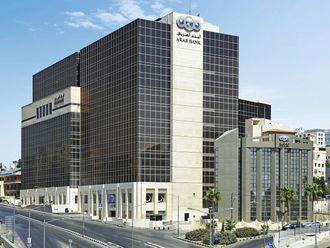Dubai: Despite common characteristics and strong financial fundamentals, top three Gulf national banks such as Qatar National Bank (QNB) National Bank of Abu Dhabi (NBAD); and National Bank of Kuwait (NBK) have differing risk profiles.
The operating environment risk profiles of NBAD and NBK are currently more contained given their smaller and more gradual expansion policies.
QNB is the fastest-growing, expanding rapidly and largely outside its home market and into countries in the Middle East and North Africa (Mena) region, which Moody’s consider being of high credit risk.
While the bank has ample capital buffers to absorb potential losses from these operations, its growing presence in some risky Mena markets, estimated at 18 per cent of assets as of end-2013, exposes the bank to sovereign and credit risks, constraining its standalone rating.
NBAD is relatively conservative with limited inorganic expansion. Although it announced plans to expand into more risky markets in Asia and Africa, its underwriting is expected to remain selective, while in the near term, it will remain focused on the lower-risk Abu Dhabi government and public sector borrowers. NBK has smaller exposures to risky markets and will likely remain focused on the more stable GCC markets.
QNB’s international operations in some Mena countries expose the bank to downside risks. Its foreign operations made up 42 per cent of group assets as of end-2013, with a big share in Mena region countries (at 23 per cent of group assets) and in European financial hubs (16 per cent). Its presence in other countries includes operations in Asia (at 3per cent of assets).
“NBAD and NBK have smaller international presence and we view the risks currently stemming from their international operations as contained,” said Alexios Philippides, an analyst at Moody’s.
Selective approach
Overseas operations are estimated at around 25 per cent — 35 per cent of NBAD’s and NBK’s assets, while exposure to high-risk countries is estimated at less than 10 per cent of assets.
“We expect NBAD to build its international presence but will likely maintain a selective expansion strategy which aims to capture trade and investment flows between Asia and the Middle East. Although this plan will build international operations into higher-risk emerging markets, the bank is expected to maintain a gradual and selective approach,” said Elena Panayiotou , Assistant Vice President at Moody’s
NBK, on the other hand, has a smaller international presence and exposures to risky markets. “We expect the bank to remain conservative and continue to expand at a slower pace internationally. Most of the bank’s operations outside Kuwait will likely remain in stable GCC markets. We estimate its operations in risky countries in the Mena region to be low; its largest overseas subsidiary is in Egypt and constituted only an estimated 3 per cent of assets as of end-2013,” said Panayiotou.












